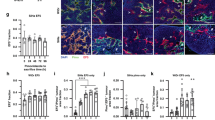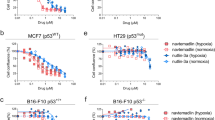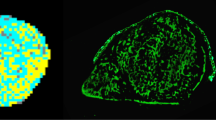Abstract
The cytocidal properties of metronidazole against hypoxic mammalian cells are described. This chemotherapeutic action has been shown to be dependent on drug concentration and duration of exposure. The x-ray TCD50 for a murine anaplastic carcinoma was reduced from 6081 rad to 4643 rad when animals were given metronidazole orally for 36 h before radiation treatment. The effect is attributed to the direct killing of hypoxic tumour cells by a mechanism analogous to that proposed for the action of the drug on anaerobic micro-organisms. It is concluded that further work with metronidazole as a cytotoxin specific for hypoxic cells is warranted, particularly in view of the reported lack of toxicity associated with the preliminary clinical use of the drug as a radiosensitizer in man.
This is a preview of subscription content, access via your institution
Access options
Subscribe to this journal
Receive 24 print issues and online access
$259.00 per year
only $10.79 per issue
Buy this article
- Purchase on Springer Link
- Instant access to full article PDF
Prices may be subject to local taxes which are calculated during checkout
Similar content being viewed by others
Rights and permissions
About this article
Cite this article
Foster, J., Conroy, P., Searle, A. et al. Metronidazole (Flagyl): characterization as a cytotoxic drug specific for hypoxic tumour cells. Br J Cancer 33, 485–490 (1976). https://doi.org/10.1038/bjc.1976.78
Issue Date:
DOI: https://doi.org/10.1038/bjc.1976.78
This article is cited by
-
Assessing the bioreductive effectiveness of the nitroimidazole RSU1069 and its prodrug RB6145: with particular reference toin vivo methods of evaluation
Cancer and Metastasis Reviews (1993)
-
Distribution of nitroimidazoles and L-phenylalanine mustard in mammary adenocarcinoma 16/C tumors
Cancer Chemotherapy and Pharmacology (1987)
-
1H nuclear magnetic resonance study of metronidazole metabolism by perfused rat liver
European Journal of Drug Metabolism and Pharmacokinetics (1985)
-
Radiobiological effect of Heparin in Swiss mice, Human Amnion cells andE. coli B/r irradiated with Co60 ?-rays
Radiation and Environmental Biophysics (1983)
-
Cytotoxicity of glucose analogues in V79 multicell spheroids
In Vitro (1979)



